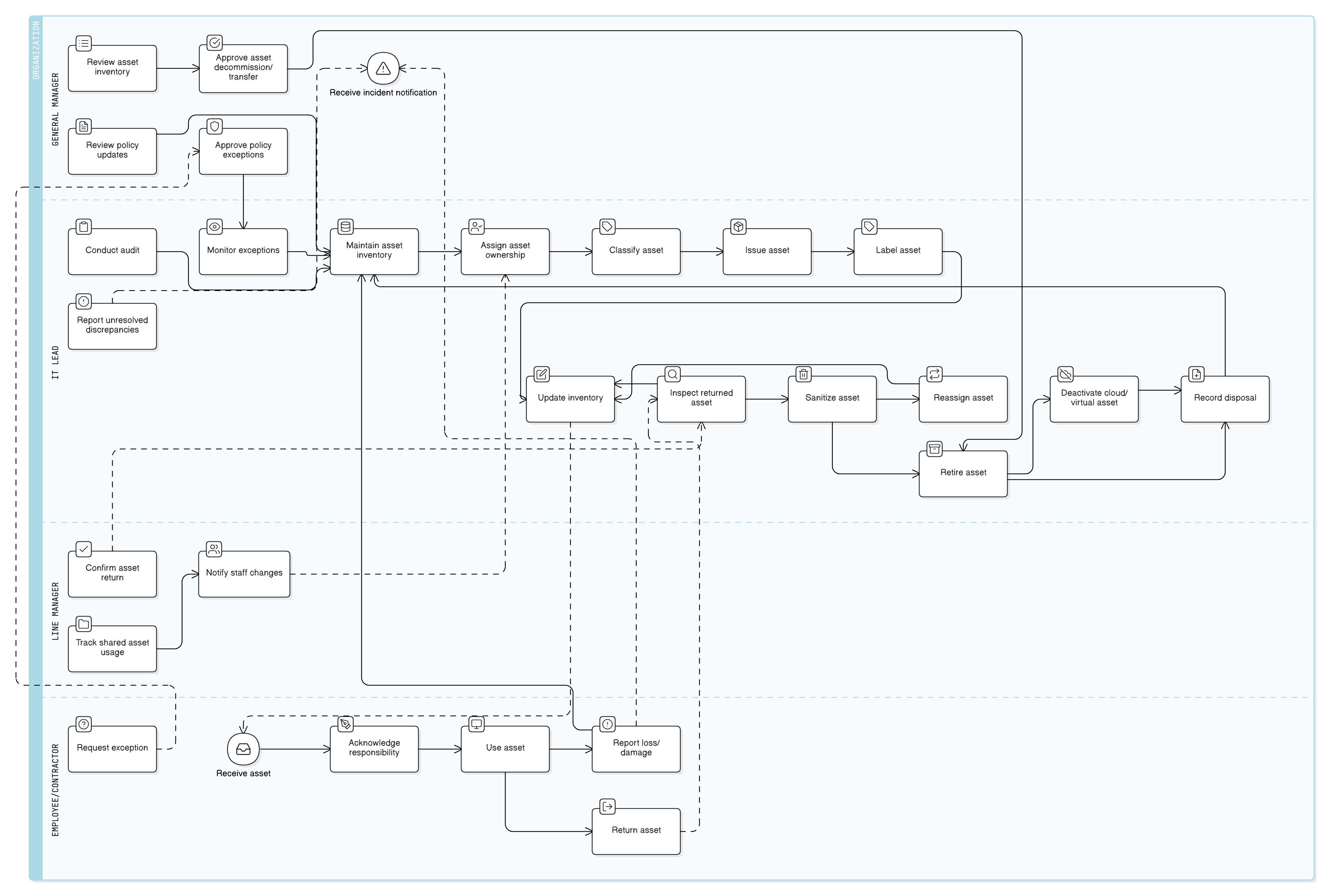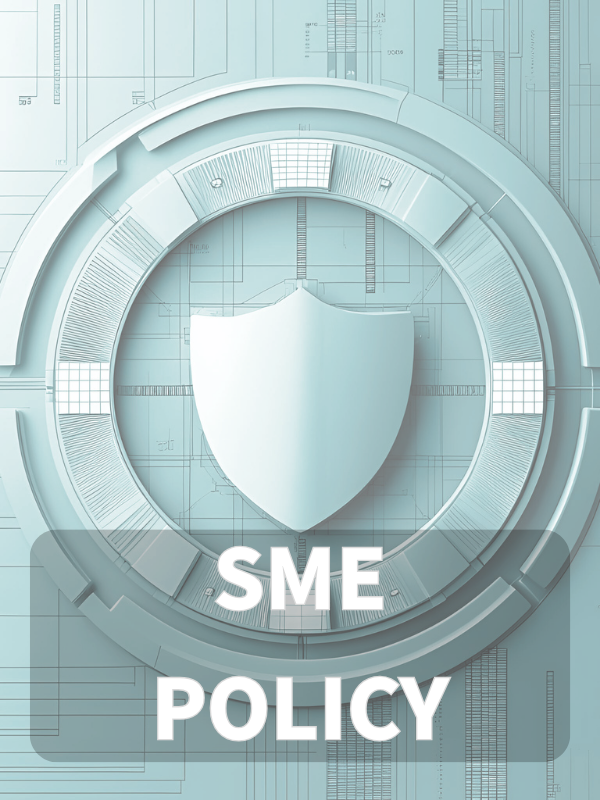Overview
This SME-focused Asset Management Policy ensures all business assets, physical and digital, are inventoried, protected, and managed throughout their lifecycle, providing clear roles, compliance requirements, and secure disposal procedures.
Complete Asset Visibility
Maintain a full inventory of business assets across all environments to minimize risks and support compliance.
Clear Ownership & Accountability
Assign and track asset responsibility using simplified roles tailored for SMEs without dedicated IT teams.
Lifecycle Security Controls
Ensure assets are securely issued, used, and retired, reducing chances of loss or unauthorized access.
Regulatory Compliance Support
Demonstrate compliance with ISO 27001, GDPR, DORA, NIS2 and more through structured asset management.
Read Full Overview
Policy Diagram

Click diagram to view full size
What's Inside
Scope and Rules of Engagement
Asset Inventory Minimum Requirements
Roles and Responsibilities for SMEs
Asset Classification and Lifecycle Controls
Secure Disposal and BYOD Provisions
Audit, Exception, and Review Procedures
Framework Compliance
🛡️ Supported Standards & Frameworks
This product is aligned with the following compliance frameworks, with detailed clause and control mappings.
| Framework | Covered Clauses / Controls |
|---|---|
| ISO/IEC 27001:2022 | |
| ISO/IEC 27002:2022 | |
| NIST SP 800-53 Rev.5 | |
| EU NIS2 | |
| EU DORA | |
| COBIT 2019 | |
| EU GDPR |
Article 30
|
Related Policies
Governance Roles And Responsibilities Policy-SME
Assigns accountability for policy ownership and IT operations.
Access Control Policy-SME
Links asset usage (e.g., laptops, mobile devices) to user access rights and identity management.
Onboarding And Termination Policy-SME
Ensures asset issuance and recovery are built into personnel lifecycle processes.
Data Classification And Labeling Policy-SME
Provides rules for determining whether an asset should be classified as Internal or Confidential.
Incident Response Policy-SME
Guides response procedures if an asset-related event results in a security or privacy breach.
About Clarysec Policies - Asset Management Policy - SME
Generic security policies are often built for large corporations, leaving small businesses struggling to apply complex rules and undefined roles. This policy is different. Our SME policies are designed from the ground up for practical implementation in organizations without dedicated security teams. We assign responsibilities to the roles you actually have, like the General Manager and your IT Provider, not an army of specialists you don't. Every requirement is broken down into a uniquely numbered clause (e.g., 5.2.1, 5.2.2). This turns the policy into a clear, step-by-step checklist, making it easy to implement, audit, and customize without rewriting entire sections.
Designed for Real-World SME Roles
Responsibilities are mapped to roles actually present in small businesses, ensuring every action is practical and achievable.
Audit-Ready Asset Records
Uses precise inventory fields and logging, helping you pass audits or regulatory reviews without expensive consultants.
Secure Disposal & Retrieval Process
Assets are tracked from purchase to secure retirement, with documented procedures for erasure, destruction, and provider accountability.
Frequently Asked Questions
Built for Leaders, By Leaders
This policy was authored by a security leader with 25+ years of experience deploying and auditing ISMS frameworks for global enterprises. It's designed not just to be a document, but a defensible framework that stands up to auditor scrutiny.
